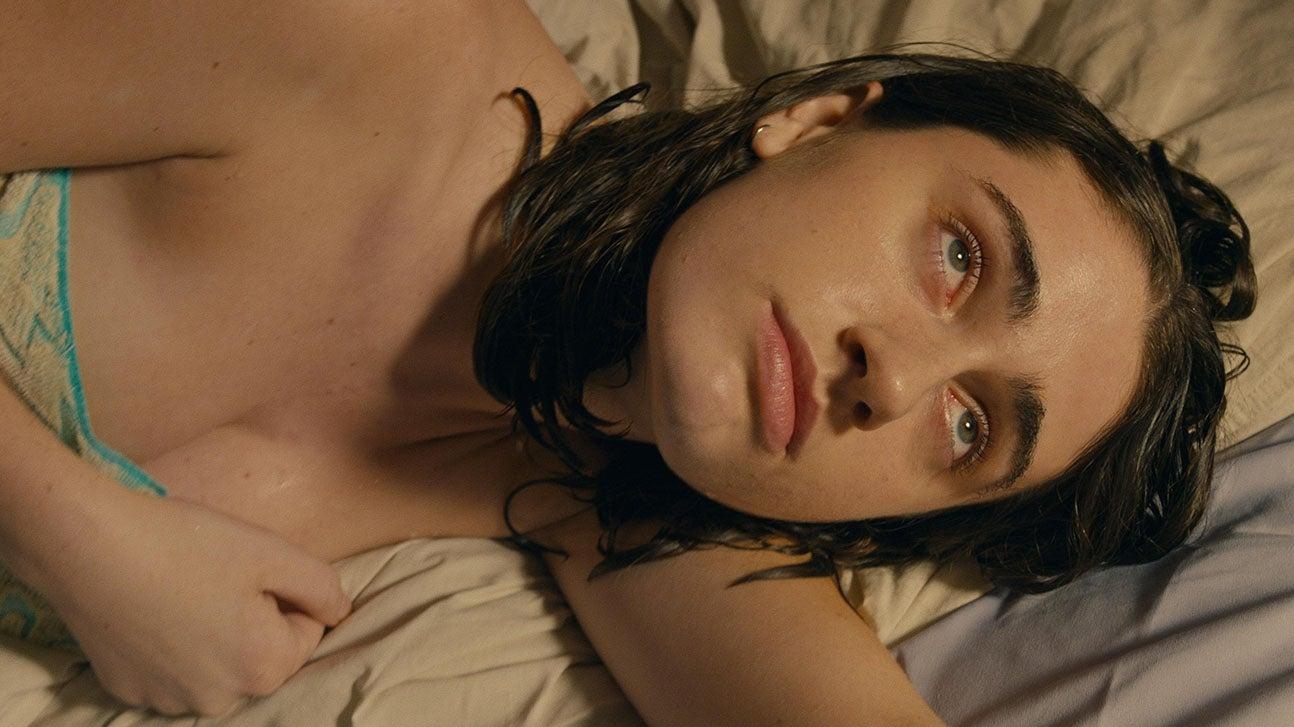I Used To Be Funny review: Rachel Sennott shows off drama chops in predictable drama
The feature debut from music video director Ally Pankiw is a sober story of sexual assault
Film Reviews Rachel Sennott
Rape jokes are never funny, except when a survivor gives you permission to laugh. In the rearview of a hard-earned recovery, it is pretty funny that the joke-teller went to bed in a sopping wet towel, commended by their friends because at least they took a shower for once. Sometimes, it’s okay to find humor in the lefty, down-with-the-patriarchy type boyfriends who still find a way to make your assault about them. Sometimes. More often, these jokes are less punchline and more punch in the gut.
I Used To Be Funny, the feature debut from Feel Good season one director and indie music video darling Ally Pankiw, exists almost exclusively in this sticky space between nervous glance and relieved chuckle—emphasis on the former. It follows Sam, a comedian in the throes of PTSD who struggles to laugh at anything at all, played with sincerity and previously unseen restraint by Rachel Sennott. As we learn through a series of unfolding flashbacks that make up the bulk of the story, Sam used to be both nanny and genuine friend to precocious teen Brooke (Olga Petsa), until a nightmare encounter forced her to leave both the job she loved and her young charge behind.
Now, in the present, Brooke is a missing person and Sam exists in a state only slightly above full-on catatonia, unable to work, contribute to the household she shares with her two best friends (Caleb Hearon and Sabrina Jalees), or do pretty much anything other than obsess over Brooke’s health and safety.
Like recent series Baby Reindeer and I May Destroy You, I Used To Be Funny is a new kind of assault testimonial, one that deeply understands the inescapably numb and often inexplicable void of the Months That Come After, while also acknowledging a facet of recovery often avoided in previous projects. In the battle to reclaim their own bodies, survivors sometimes hurt the ones they love just deeply. It’s an uncomfortable truth, but it is the truth—which Pankiw’s script never denies. It’s one of the things it does best.
The screenplay certainly isn’t perfect. Stretches of malaise almost become unwatchable. Early scenes feature some pretty brutal dialogue in an attempt to be cutting-edge (“I think you need to tell someone you saw her, like the fucking police, even though ACAB obviously”), and the flashback structure takes a little while to find its footing. Still, the result is a surprisingly gripping “mystery” that builds to a genuinely moving climax—one viewers might see coming, but still manages to feel shocking and urgent nonetheless.
But while the writing is mostly good, none of these highs would have been nearly as high without Sennott, who makes a real bid for future dramatic roles here. We know the Bottoms and Bodies Bodies Bodies actor can play big and outlandish, but she’s perfect in this more dampened form. Her comedic chops lend credence to the film’s frequent standup scenes (which mostly take place in the flashbacks and are genuinely funny), while the awareness of what she can do but isn’t deepens the sense of loss so crucial to the post-assault timeline. Petsa also puts in solid work as the alternately grieving and rebellious Brooke, and the two actors share a real chemistry with one another. While it often gets sidelined in favor of the trauma piece, it’s also refreshing to see a film depict a mentor-mentee female friendship with such heart.
Unfortunately, the downfall of I Used To Be Funny comes from how obviously it panders to the crowd that will only watch this because of Pankiw’s proximity to MUNA, Phoebe Bridgers, and the rest of their hot girl milieu. To some, Pankiw is best known as the director of MUNA and Bridgers’ But I’m A Cheerleader-riffing “Silk Chiffon” video, and after this, well, she probably still will be. There’s no way to forget Pankiw’s origins while watching I Used To Be Funny, because it feels set to a Spotify playlist filled with MUNA, Bridgers, Big Thief, and The Japanese House songs on shuffle, playing a new one every 1o minutes. I Saw The TV Glow this is not. To borrow some old Say Yes To The Dress wisdom, a film should be wearing its soundtrack, the soundtrack shouldn’t be wearing it. I Used To Be Funny is definitely getting worn.
This overbearing aural fixation leads up to one big final song we won’t spoil here, but will be immediately obvious to anyone familiar with this particular group of artists. So obvious, in fact, that actually hearing its first notes play over an equally predictable final scene (one that feels plucked directly from a Canadian version of The Florida Project) was the hardest this writer laughed during the film’s entire runtime. At least it was cathartic.